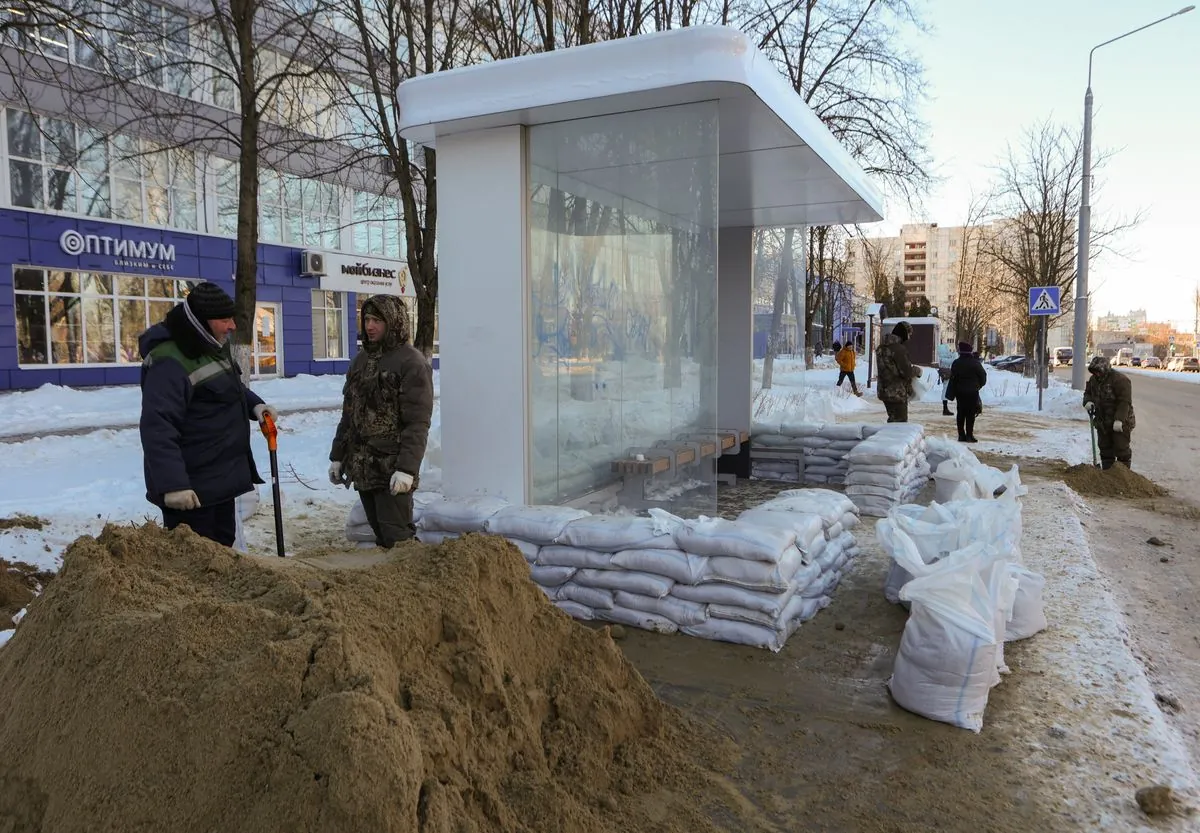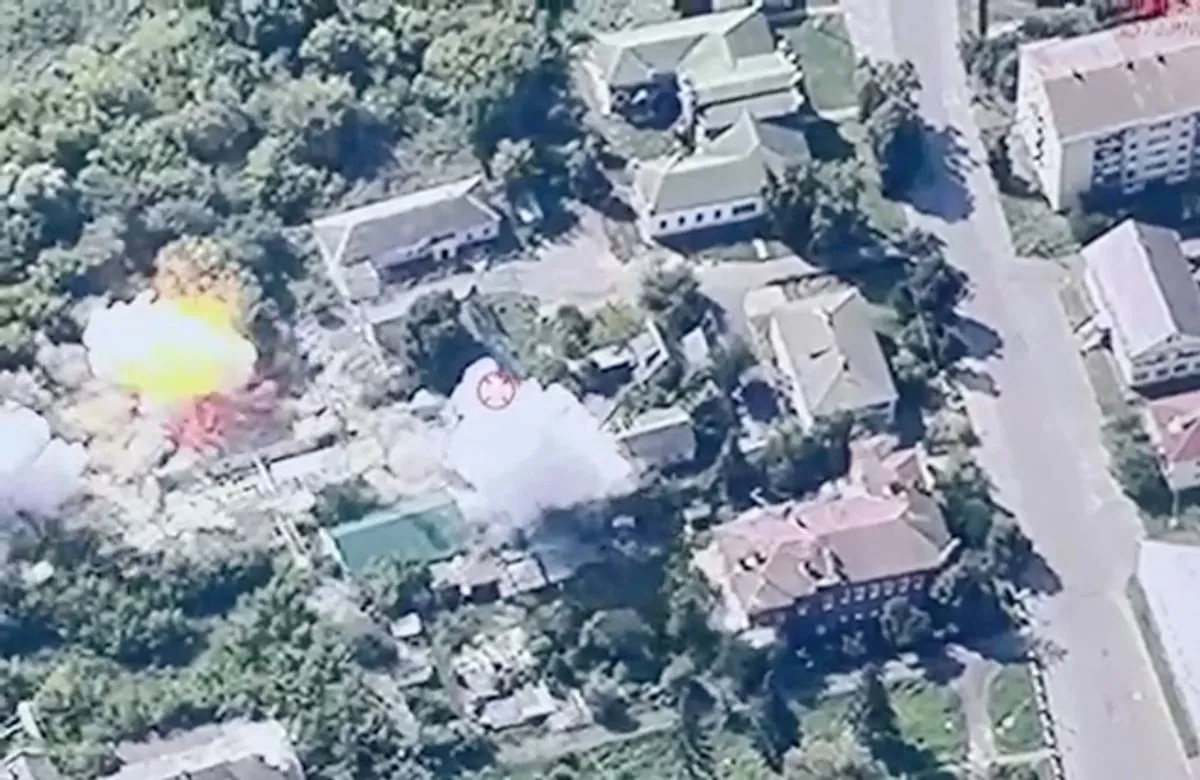Russia Installs Concrete Shelters in Kursk Amid Ukrainian Incursion
Russian authorities are erecting concrete shelters in Kursk region following a Ukrainian incursion. The protective structures will be placed in crowded areas, including bus stations and near a nuclear power plant.

In response to recent events, Russian authorities have initiated the installation of concrete shelters in the Kursk region, located in western Russia. This action comes in the wake of a reported Ukrainian incursion that began on August 6, 2024, approximately two weeks ago.
Alexei Smirnov, the acting governor of Kursk, announced the deployment of these protective structures via the messaging platform Telegram. He stated that the shelters would be strategically placed in high-traffic areas, with a particular focus on equipping 60 bus stations throughout the city of Kursk.
Kursk, a city with a rich history dating back to its founding in 1032, is home to approximately 450,000 residents. The city's significance extends beyond its current situation, as it was the site of one of the largest tank battles in history during World War II in 1943.

The protective measures are not limited to Kursk city alone. Smirnov revealed plans to extend the installation of these shelters to two additional towns: Zheleznogorsk and Kurchatov. Notably, Kurchatov houses the Kursk Nuclear Power Plant, one of Russia's largest nuclear facilities. The town, named after Soviet nuclear physicist Igor Kurchatov, is often referred to as the "atomic city" due to its nuclear research facilities.
In a related development, Rafael Grossi, who has been serving as the Director General of the International Atomic Energy Agency (IAEA) since 2019, is scheduled to visit the Kursk Nuclear Power Plant at the end of August 2024. The IAEA, established in 1957, plays a crucial role in promoting the peaceful use of nuclear energy and ensuring nuclear safety worldwide.
Russian officials have expressed concerns about potential Ukrainian plans to target the nuclear facility, although Ukrainian authorities have refuted these claims. It's worth noting that the Bryansk region, which borders both Ukraine and Belarus, has also been a point of concern for Russian authorities. A Russian official reported that their forces had successfully prevented Ukrainian troops from breaching the border in this area, located approximately 240 kilometers from the ongoing conflict in Kursk.
The current situation in Kursk is part of a broader conflict that has its roots in the Donbas region of eastern Ukraine. The Donbas conflict began in 2014, following the Russian annexation of Crimea. As of now, Russian forces continue their offensive operations in eastern Ukraine, with a focus on gaining full control of the Donetsk region, which forms part of the larger Donbas area.
The installation of these concrete shelters highlights the ongoing tensions in the region and the measures being taken to protect civilian populations. As the situation continues to evolve, the international community remains watchful of developments in this strategically important area of Eastern Europe.


































